X-Wing
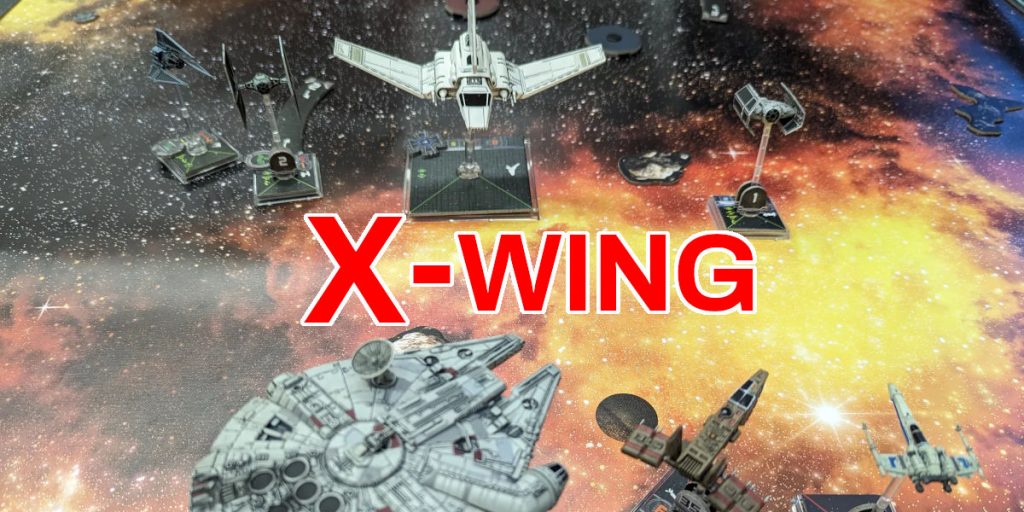
We played quite a few games of the X-Wing miniatures game shortly after it first came out. By the time second edition was released, we’d pretty much stopped playing, so everything that I have for this game dates back to early first edition.
It’s actually a really well put together game, which has a nifty movement and action system which doesn’t get too complicated due to the use of various game aids. It’s also quite good at capturing the feel of the Star Wars universe, and has a range of options for building your own ships.
Each unit is a single ship, such as an X-wing or TIE fighter. Each type of ship comes with its own ‘movement dial’, which determines what types of manoeuvres it can make. Movement is done using movement templates. To move, you put a template in front of a ship, then move the ship to the other end of the template. It’s pretty quick and easy.
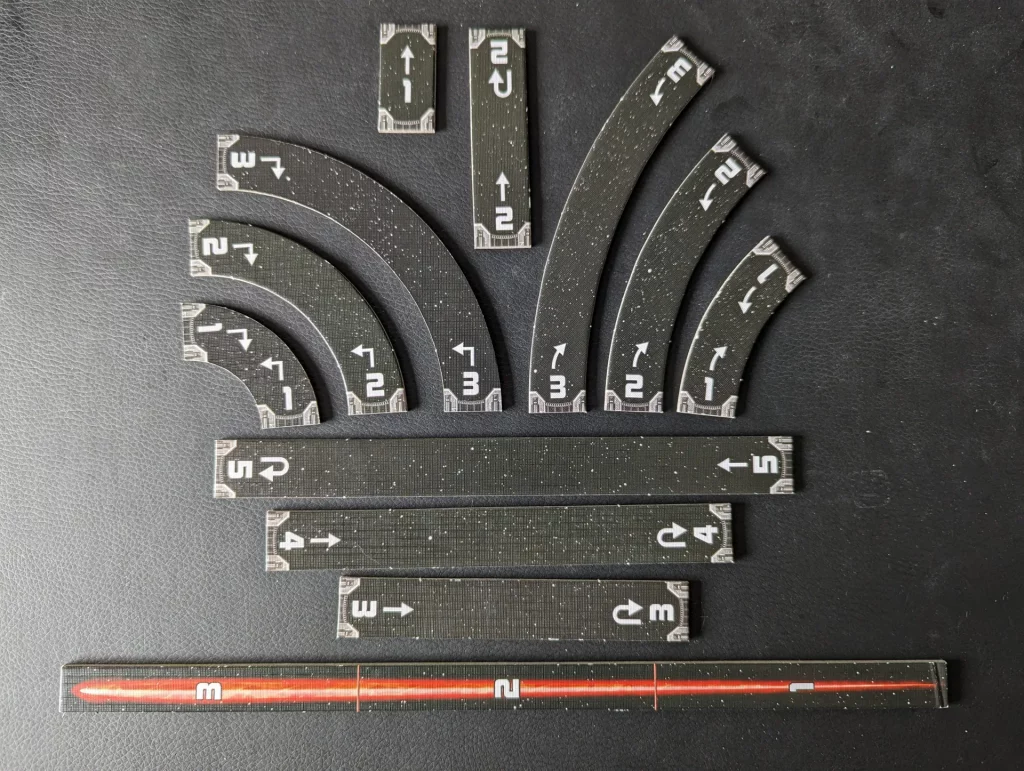
The dial has a range of movements on it. You select which movement you want the ship to do, then place it face down next to the ship. In the movement phase, everyone takes turns revealing their moves. In some ways it is similar to Check Your Six, but greatly simplified.
Some movements are green or red. Red movements give you stress, and you can’t make red movements or take special actions whilst stressed. Green movements remove stress.
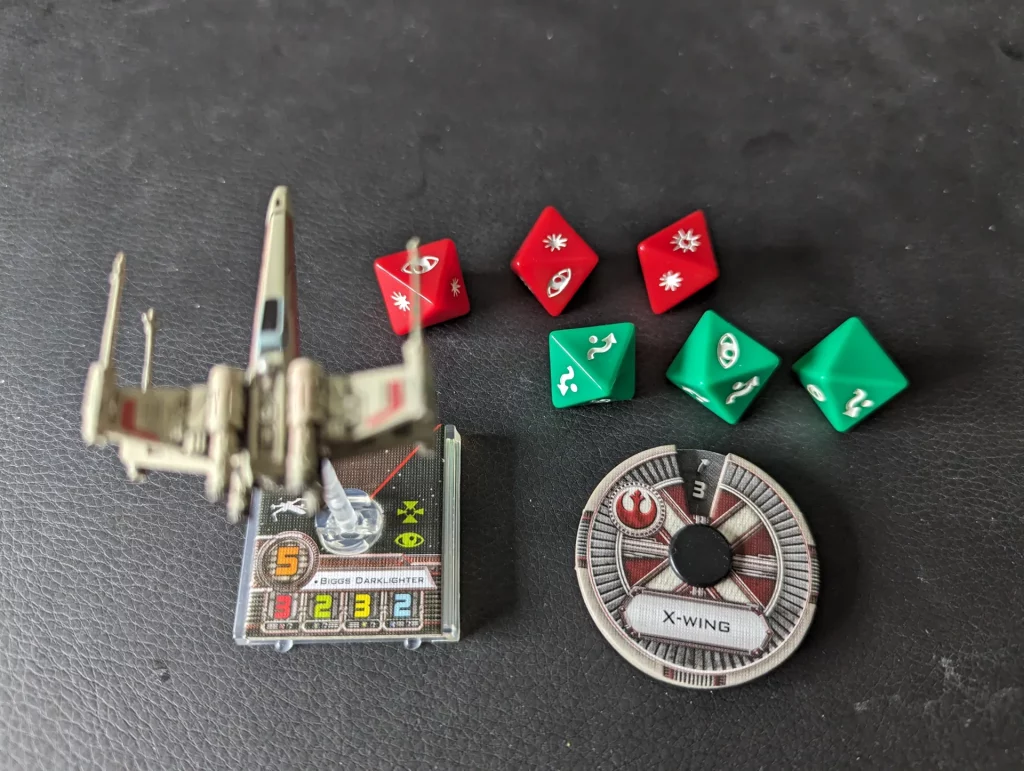
Each ship has four stats – damage, agility, hull strength and shields. The pilot also has a skill, which determines who acts first in a turn.
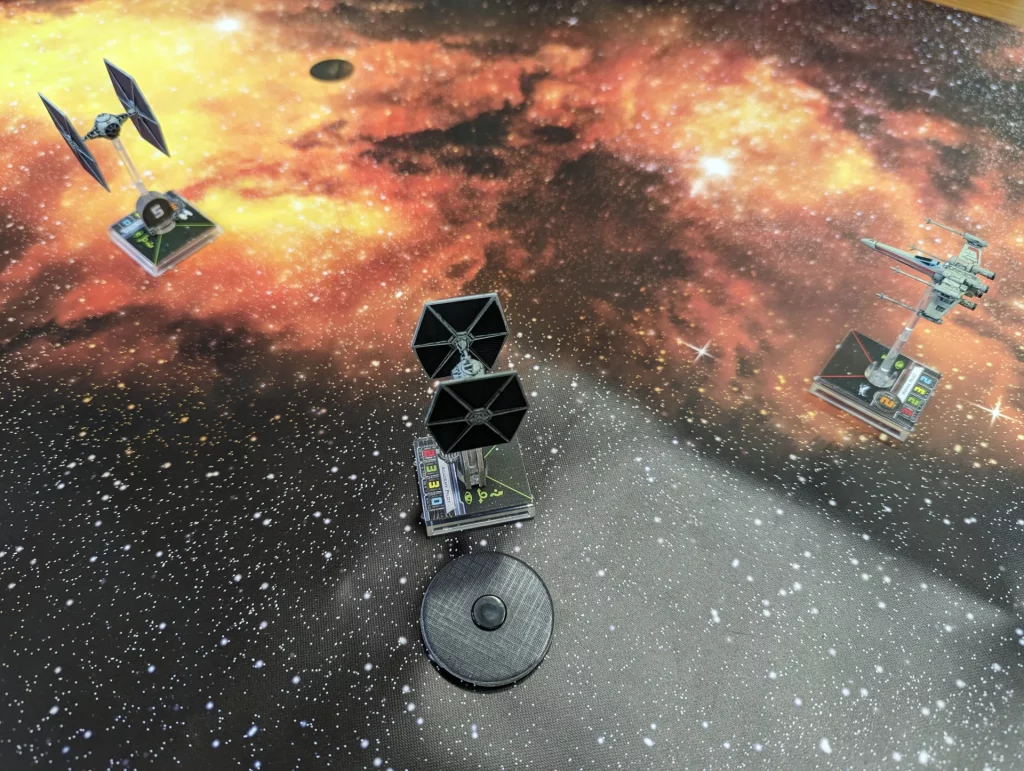
Since we hadn’t played the game for a while, we played the starting scenario first which has an X-Wing against two TIE fighters, with a cut down version of the rules. There were three of us, so we each took a ship. The first game didn’t take long, and we quickly re-remembered the rules.
Combat is just as quick as movement. Each ship has a forward arc where it’s primary weapon fires through. You roll red damage dice equal to the damage rating of the ship, and roll green dodge dice equal to the agility of the ship. Each ‘star’ does one point of damage, and each ‘dodge’ symbol negates one point of damage.
For our second game, we introduced the advanced rules, which add a few complexities. Weapon ranges now give bonuses and penalties (an extra damage die at range 1, at extra dodge die at range 3). It also introduces actions. At the end of each ship move, the ship can (if it isn’t stressed) take a special action. This can be focus (the ‘eye’ symbols on the damage dice now do damage as well), evasion (add an automatic dodge when attacked), target lock, barrel rolls etc.
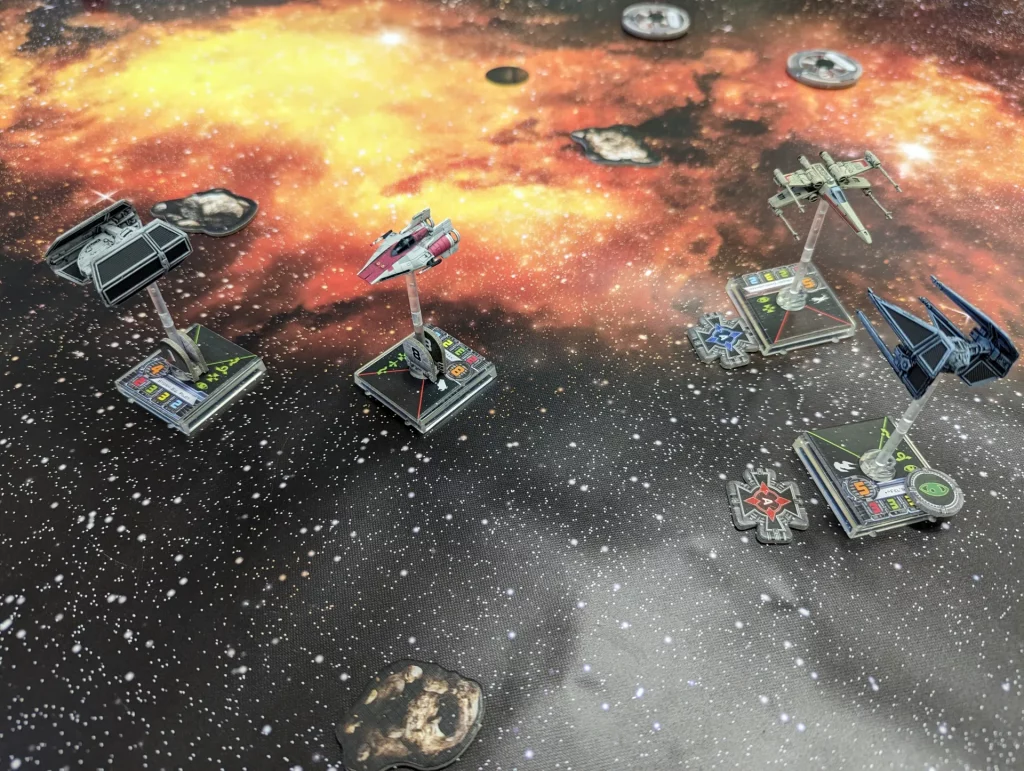
For our third game, we introduced different ships and some asteroids. The Imperials took a TIE advanced and a TIE interceptor, whilst the Rebels had an X-Wing and an A-Wing. The interceptor was destroyed almost immediately, but the TIE advanced managed to hang on for a long time before it was finally destroyed.
Since I was the Interceptor pilot, this gave me some time to come up with a full 100pt Rebel fleet, which I took on against an equal sized Imperial fleet for our fourth game. I did say that the game was quick.
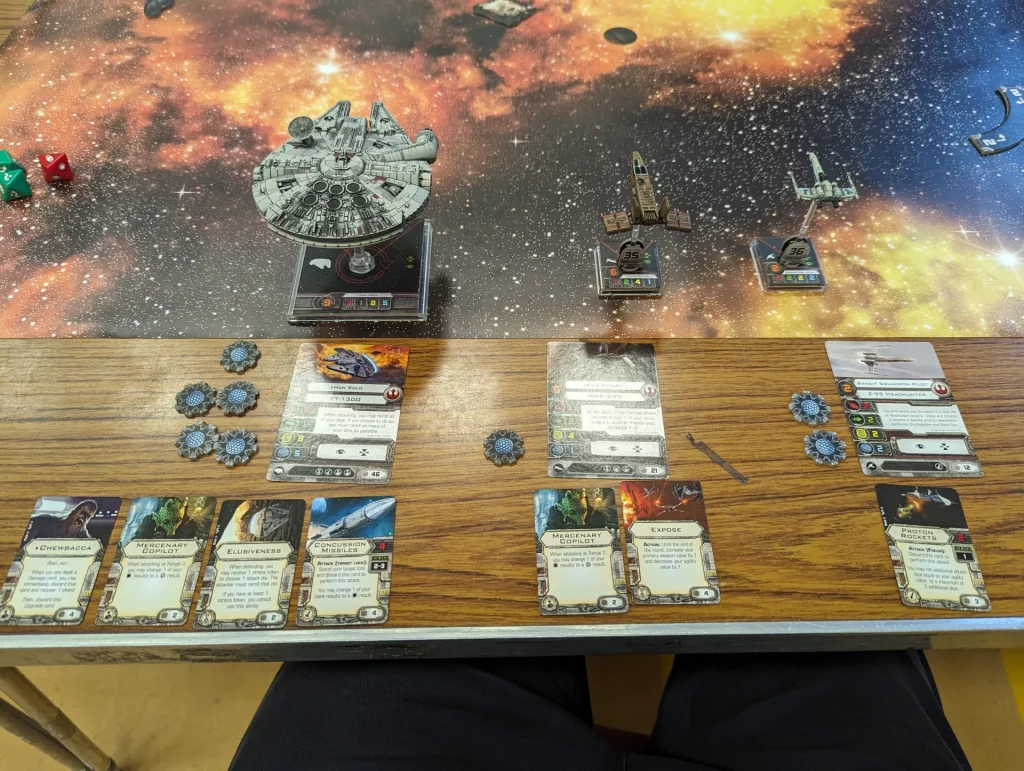
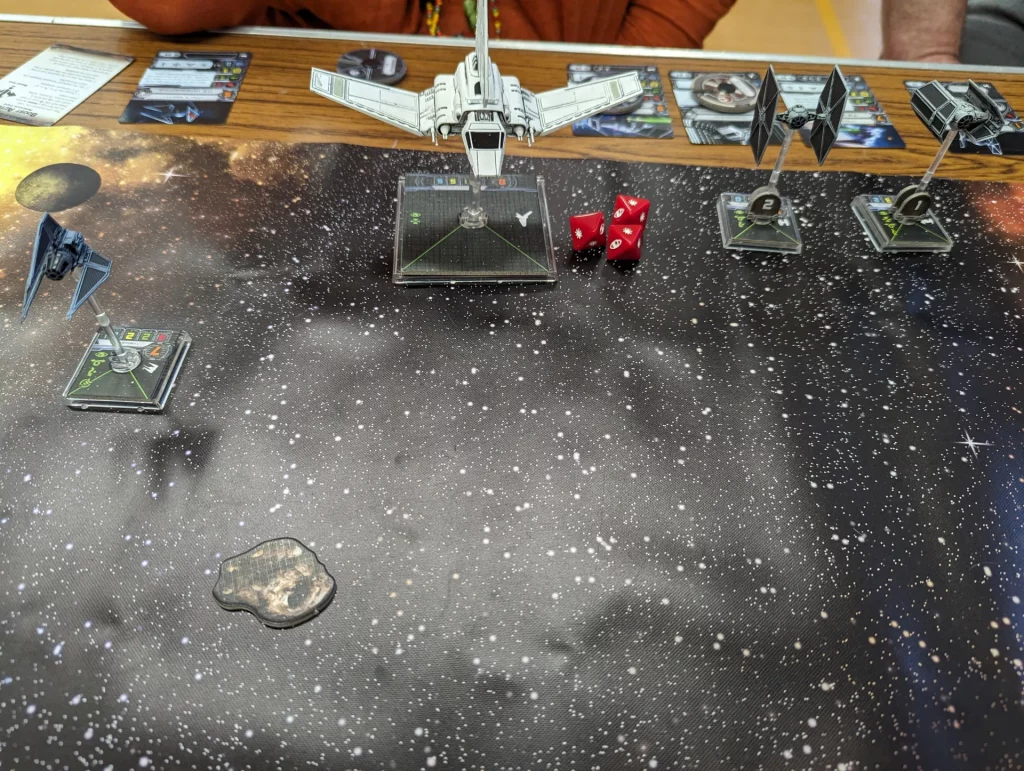
The fourth game was longer. I’d selected a lot of special options for my fleet. You can add extra crew and droids, ship modifications and weapons to ships for extra points. The Millennium Falcon came with a little surprise, in that it has a turret mounted weapon so can fire in any direction.
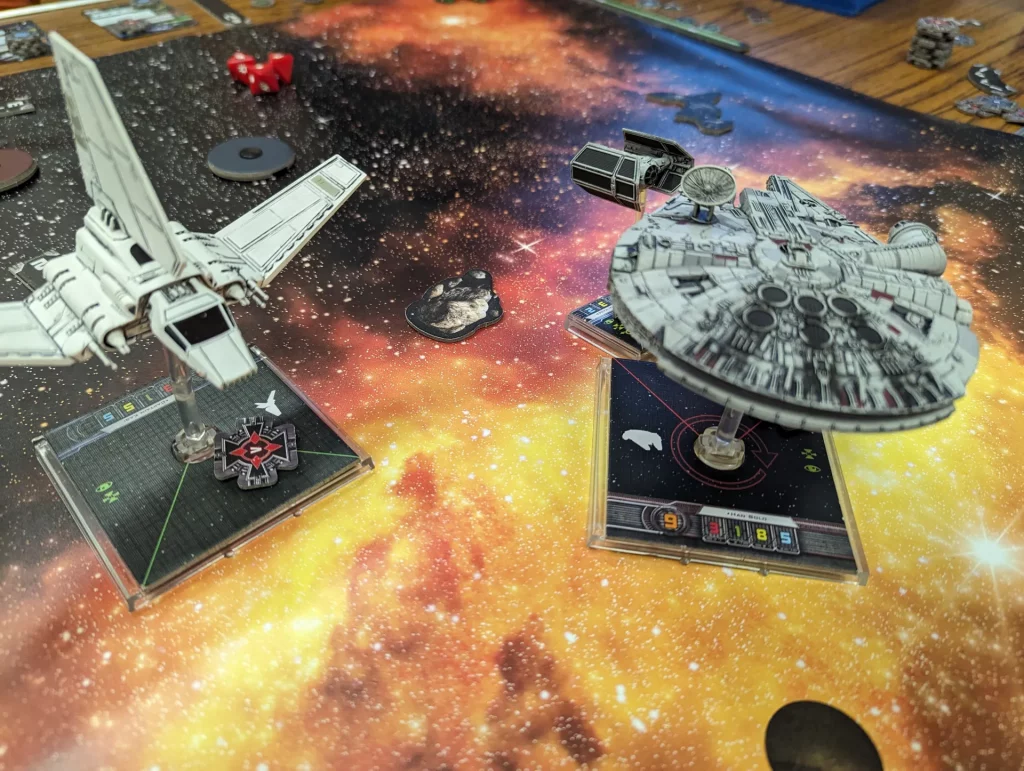
The Imperials had a Phantom – a TIE fighter with cloaking ability. Unfortunately for me, things didn’t go well for the Rebels. The Falcon lost a lot of its shields pretty quickly, then continued to be whittled down over the following rounds.
All my ships also kept on getting in each other’s way, so they couldn’t actually shoot most of the time. This was entirely my fault, since I kept forgetting that the Falcon moved last, so the two smaller ships would run into it before it moved out of the way.
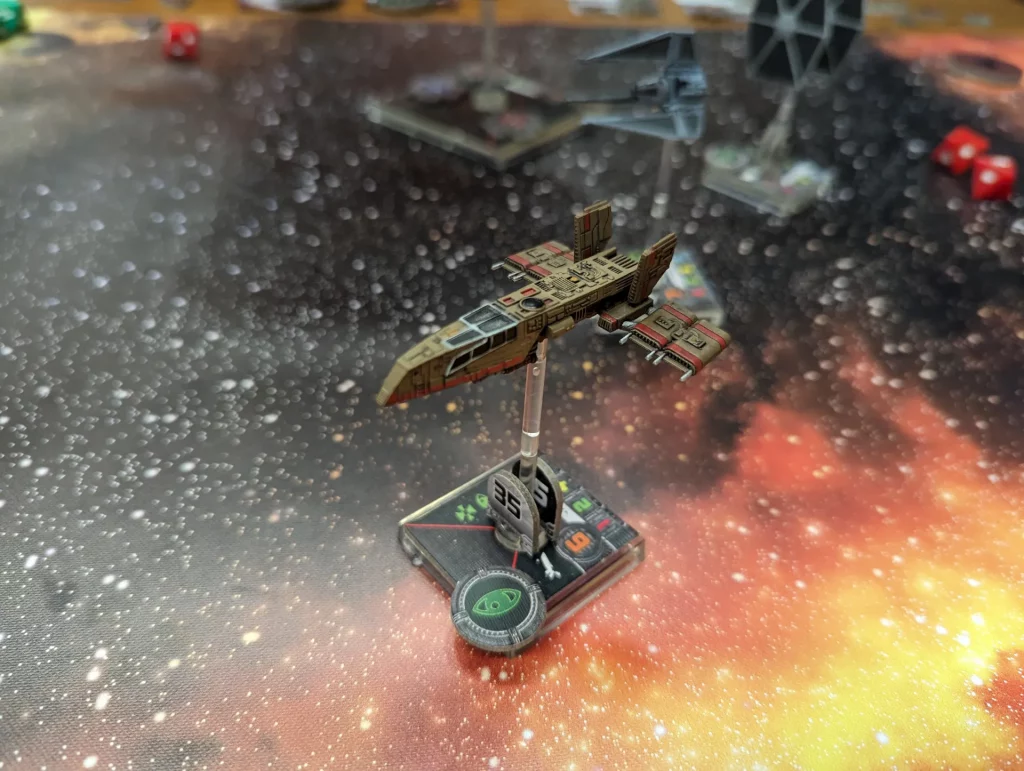
With the Imperial Shuttle forcing me to only get target locks on it, I couldn’t use my missiles against the smaller craft that I wanted to destroy. In the end, my Z-95 got used as a movement blocker against the shuttle, until at the very end when it zipped away, did a 180 and fired its proton torpedoes. It didn’t damage the hull, but took down a lot of the shuttle’s shields.
By this point though, the Imperials were using similar tactics against the Falcon, and by the time we decided to call it, the Falcon was almost dead. Surprisingly, no ships had been destroyed in this fight, though a few had been damaged.
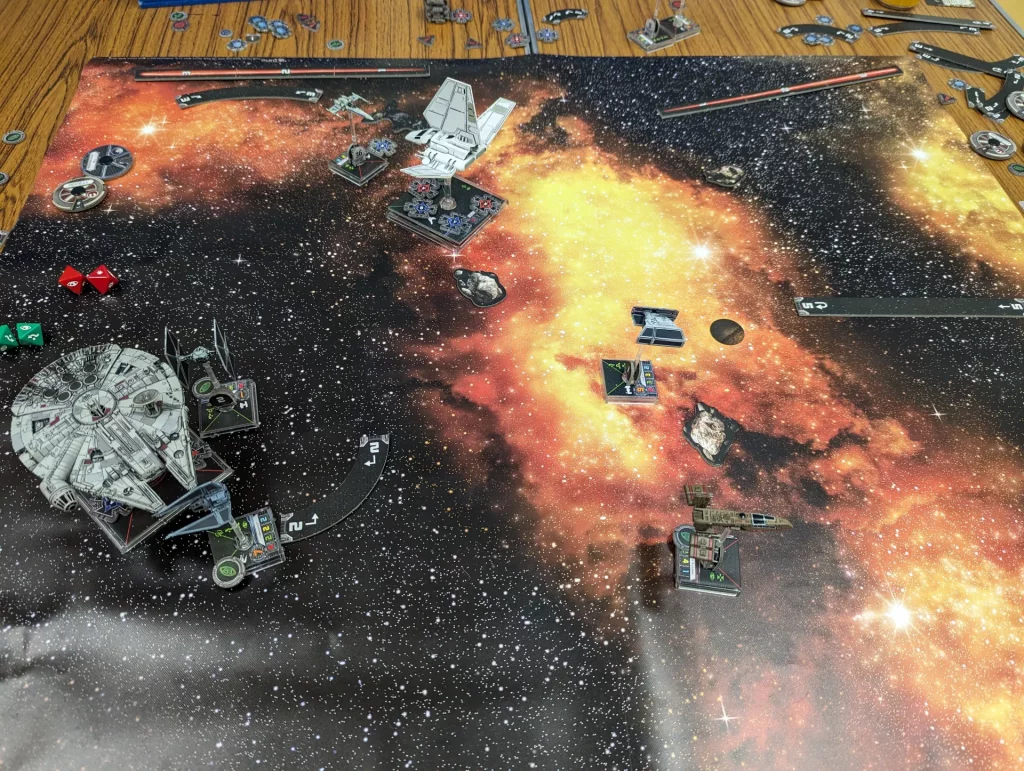
It was a lot of fun getting this game out again, and it worked well even with three players split across two sides. I think it’s probably going to see the light of day again soon.
3 Responses
-
Pingback: Another Two Days – Gaming Chronicles
Nice report. Did you play this in the club last night?
We did indeed. Will probably bring it down again in a few weeks.